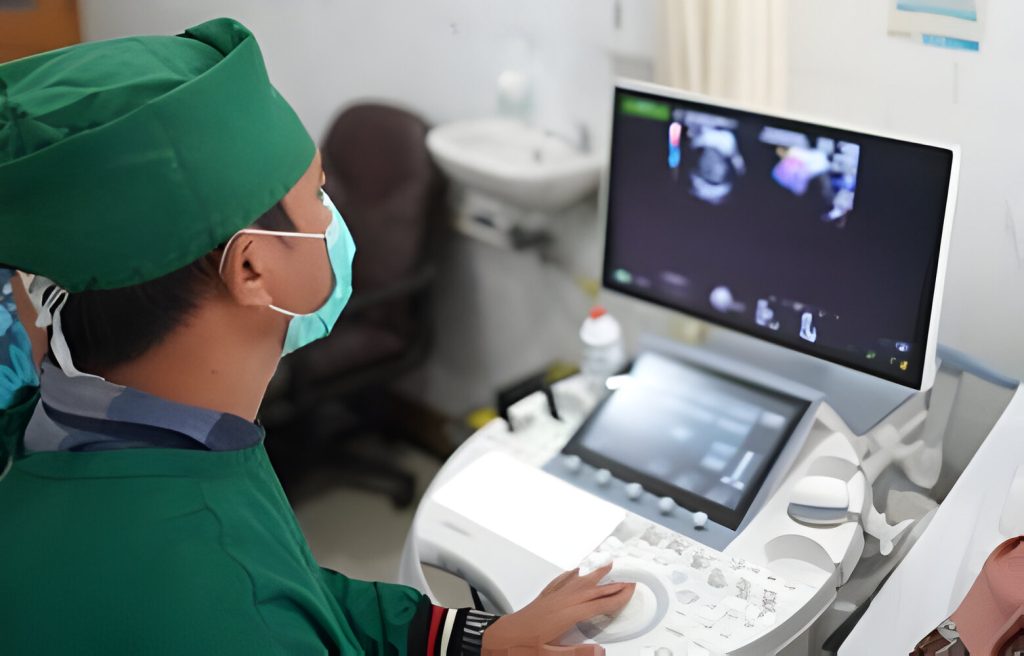EFM Guide: Ensuring Baby’s Health During Labor

Welcome to our comprehensive guide on Electronic Fetal Monitoring (EFM) and its vital role in ensuring the health of babies during labor. As expectant parents, it’s natural to have concerns about your baby’s well-being throughout the birthing process. That’s where EFM comes in, offering valuable insights into your baby’s condition and helping healthcare professionals make informed decisions during this critical time.
Electronic Fetal Monitoring, commonly known as EFM, is a technique used to track and record the baby’s heart rate and other vital signs during labor. By monitoring these indicators, healthcare providers can identify any potential signs of distress or complications, enabling them to take prompt action and ensure the well-being of both mother and baby.
Understanding EFM and its significance is crucial for all expectant parents. In the following sections, we will delve into the details of electronic fetal monitoring, exploring its purpose, benefits, limitations, and overall safety. By the end of this guide, you will have a comprehensive understanding of EFM and its role in modern childbirth practices.
Free EFM Practice Test Online
Key Takeaways:
- EFM is a technique used to monitor the fetal heartbeat and other vital signs during labor.
- It helps healthcare professionals detect potential fetal distress and intervene timely.
- EFM provides valuable insights to ensure the well-being of both mother and baby.
- Although EFM has limitations, it plays a crucial role in modern childbirth practices.
- Understanding EFM can empower expectant parents to actively participate in their baby’s health journey.
Understanding Electronic Fetal Monitoring 2025
Electronic Fetal Monitoring (EFM) is a crucial aspect of modern childbirth practices. It involves the use of advanced technology to monitor the well-being of the baby during labor. By understanding EFM, we can ensure the safety and health of both mother and child.
How EFM Works
The purpose of EFM is to continuously monitor the fetal heartbeat and uterine contractions. This is achieved through the use of special sensors placed on the mother’s abdomen. These sensors detect and record the electrical signals produced by the baby’s heart, allowing healthcare providers to closely monitor their well-being.

The Purpose of EFM
The primary purpose of EFM is to assess the baby’s well-being during labor. It helps healthcare providers detect any signs of fetal distress, such as changes in the baby’s heart rate, that may require immediate intervention. By monitoring the fetal heartbeat and uterine contractions, EFM provides valuable information about the baby’s oxygen supply and overall health.
Types of EFM Technologies
There are two main types of EFM technologies: external and internal monitoring. External monitoring involves placing sensors on the mother’s abdomen, as mentioned earlier. This method is non-invasive and widely used. Internal monitoring, on the other hand, involves inserting a special electrode through the cervix and attaching it to the baby’s scalp. This provides more accurate and detailed information but is usually reserved for specific situations.
| EFM Technology | Advantages | Disadvantages |
|---|---|---|
| External Monitoring | – Non-invasive – Easy to use – Widely available | – May require readjustment – Limited accuracy |
| Internal Monitoring | – Greater accuracy – Detailed information | – Invasive procedure – Limited usage |
Understanding EFM is essential for expectant parents and healthcare providers alike. It plays a vital role in ensuring the well-being of the baby during labor, enabling timely interventions when necessary. By monitoring the fetal heartbeat and uterine contractions, EFM provides valuable insights into the baby’s health, allowing for a safer childbirth experience.
Benefits and Limitations of EFM
Electronic fetal monitoring (EFM) offers numerous benefits in the monitoring and management of labor, ensuring the safety and well-being of both the mother and the baby. EFM provides continuous surveillance of the fetal heart rate and uterine contractions, allowing healthcare professionals to detect potential fetal distress and intervene promptly if necessary.
- Early detection of fetal distress: One of the key benefits of EFM is its ability to detect signs of fetal distress early on. By continuously monitoring the baby’s heart rate, EFM allows healthcare providers to identify any irregularities or abnormalities that may indicate potential complications. This early detection enables timely intervention, ensuring appropriate care and reducing the risk of adverse outcomes.
- Facilitates evidence-based decision-making: EFM provides valuable insights into the progress of labor and the well-being of the baby. By monitoring the fetal heart rate patterns and uterine contractions, healthcare professionals can make informed decisions about the appropriate course of action. EFM helps guide interventions such as the administration of medications, the need for cesarean section, or other necessary interventions based on the evidence gathered.
- Enhanced documentation and communication: EFM allows for real-time and accurate documentation of the fetal heart rate patterns and uterine contractions during labor. This documentation helps in the communication between healthcare providers, ensuring a seamless transfer of care and promoting effective collaboration among the medical team. It also aids in the analysis and review of the labor progress retrospectively, assisting with research, teaching, and quality improvement efforts.
Despite its benefits, EFM is not without limitations. It is important to recognize and address these limitations to ensure the safe and effective use of EFM in clinical practice.
- False-positive or false-negative results: EFM can sometimes generate false-positive or false-negative results, leading to unnecessary interventions or missing signs of fetal distress. The interpretation of EFM tracings requires expertise and experience to differentiate normal and abnormal patterns accurately.
- Potential for excessive interventions: EFM may contribute to an increased rate of interventions, such as cesarean sections or instrumental deliveries, which can carry their own risks. Careful consideration of the clinical context, ongoing assessment of the mother and baby, and individualized management are essential to avoid unnecessary interventions.
- Safety considerations: While EFM is generally safe, there are rare instances of complications such as skin irritation or pressure ulcers due to the use of the monitoring devices. Proper placement and regular monitoring of the devices can minimize the risk of these complications.
Overall, electronic fetal monitoring (EFM) plays a crucial role in ensuring the health and safety of the baby during labor. Its benefits in early detection of fetal distress and evidence-based decision-making are invaluable. However, it is essential to acknowledge the limitations and exercise caution in the interpretation and use of EFM to optimize its effectiveness and minimize unnecessary interventions.

Conclusion
In conclusion, electronic fetal monitoring (EFM) plays a crucial role in ensuring the health and well-being of the baby during labor. By continuously monitoring the fetal heartbeat and contractions, EFM provides valuable insights into the baby’s condition and helps detect any signs of distress or complications.
While EFM offers many benefits, it is important to acknowledge its limitations. False-positive or false-negative results can occur, leading to unnecessary interventions or overlooking potential issues. Moreover, EFM should always be used in conjunction with clinical judgment to avoid over-reliance on the technology.
Despite its limitations, EFM remains a widely used and essential tool in modern childbirth practices. It has significantly improved obstetric care by allowing healthcare professionals to intervene promptly when necessary. As technology continues to advance, EFM is expected to become even more accurate and reliable in the future, further enhancing the safety and well-being of both mothers and babies.